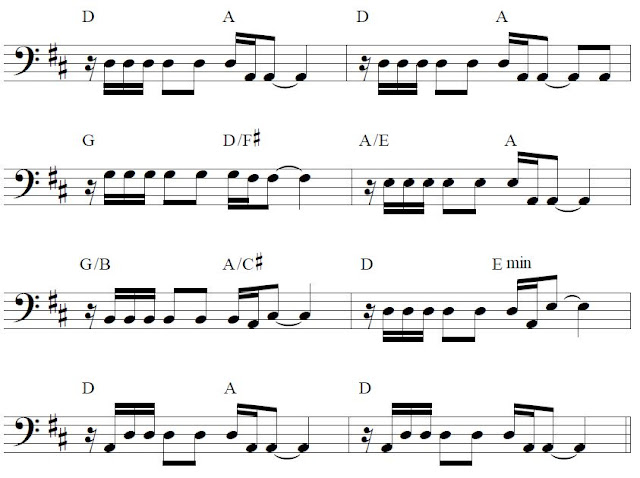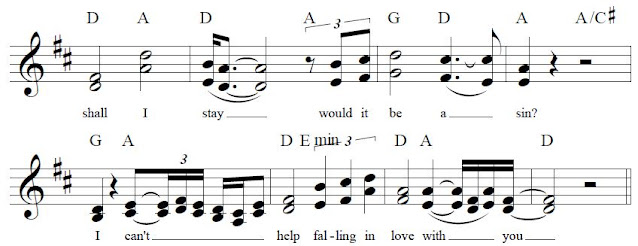"The Morning After" or "The Song from the Poseidon Adventure" is one of many random 70's hits that made its way to the no. 1 position on the Billboard Hot 100. In my analyses thus far, the 70's contributions have been real head scratchers. Just a year before today's entry, Gilbert O'Sullivan sang about committing suicide after being stood up at the alter. In 1971, the Bee Gees crooned softly about their own familial troubles. The Carpenters sang a low key classic in 1970 and even Lionel Richie kept the slow dance moving with 1978's "3 Times A Lady." Of this 6 songs I've analyzed from the decade, the average tempo has been 89 bpm. Yes, I know the sample size is small and random, but I think this speaks to the fondness of ballads and easy listening that permeated the collective popular tastes.
Maureen McGovern was a secretary who sang in a folk band. When 20th Century Fox wanted a single version of a prominent song in the movie The Poseidon Adventure, McGovern eventually got the call. [1] It worked out well for her, even if the music (and movie) are good examples of melodramatic cheese that 70's is now known for. Despite an overall presentation that is quite forgettable, there are some interesting changes and melodies buried within the lush orchestral arrangement.
August 4th - August 11th, 1973: "The Morning After" by Maureen McGovern sails at the no.1 position on the Billboard Hot 100 for 2 weeks!
One of the elements that both hurts and helps this song is the length. It's quite short, so you never have enough time to be completely annoyed by it. It's so short, however, that it's easy to forget. There is no chorus, just three verses (and a coda) that use variations on the lyrical theme "there's got to be a morning after."
The AABA form isn't too surprising for a song featured in a movie and written by TV and movie writers Al Kasha and Joel Hirschhorn. It has a very "jazz lead sheety" vibe. The song plods on with some thick arranging with a full orchestra that never really traverses too much ground. Harmonically, it's jazzy as well, which features a bridge that eventually sets up a modulation for the final part of the tune (more on that in "Chord Progressions").
The outro hammers home the hook several times with an impressive countermelody over the top. As pleasant as some moments are, it's over as soon as it begins.
Chord Progressions
The opening chords tell you right away we are in for an easy listening spectacular. Harp glissando, soaring oboe, warm piano, oh my.
 |
| Intro |
In the key of Bb, IV and V lead us, predictably, to I. The Fsus to F change foreshadows a sequence that permeates the entire tune and happens on just about every V -I cadence throughout. Once in the verse, strings lay down some lovely pads behind a moving piano and a surprisingly active bass line.
 |
| Verse 1 Score Redux |
I / V V/vi / vi / IV / II (V/V) V V/vi / vi / IV bVII/ V
The chromatic and stepwise bass motion takes center stage for me, with beautiful voicings forming around the moving line. Included above are some of the moving string and piano parts that add to the overall texture. Though the changes are fairly "normal," there are a few surprises like the C7/E and the Ab. These moments, enhanced by a patterned vocal melody, do their best to help the song develop an identity (which it never really does).
The repeated piano notes in m5 is, in a way, foreshadow the gnarly harpsichord part in verse 2:
 |
| Verse 2 Harpsichord |
The notes shift in small increments, outlining the chord of the moment in a fashion not unlike the bassline stealthily moving through the changes. Unfortunately, the harpsichord dates the sound in a major way. (I'm personally glad modern pop music doesn't feature too many harpsichord call backs).
The bridge features a few harmonic twists that eventually lead to a modulation up a half step. The first shift moves up a minor 3rd from Bb to Db major. The ultimate function of this chord is V/V of the modulated target (B major), so perhaps C# is more appropriate? Either way, we get shifting chord qualities with more stepwise motion in the supporting instruments. After 3 1/2 measures, The bass comes off the Db pedal and sets up DbMaj7/Ab and Gb (F#) where the modulation fully comes into view.
 |
| Bridge Score Redux |
The Gb (F#) leads to E, where a ii-V change sets up the turnaround to the new key. In these final measures before the return to A, we get a variation on the verse changes - ii-IV / Vsus V, instead of IV / ii V. The use of the Vsus V resolution also leads the ear back to the A section.
bIII (V/V - B)/ / / V/IV (B) / IV / ii (E) V (E)/ ii IV/ V (B)
The A section repeats for a third verse and we hear the same changes, only up a half step. The coda features a moving B chord, functioning similarly to the Db in the bridge with shifting lines that change the quality of the chord. Here, they move trough the 6th and 4th. Check out the bass in this section, ripping through some improv style lines of the constant B major tonality.
Melody
Maureen McGovern delivers a strong performance belting out the melody. Most phrases are concluded with a sustained note that she holds for the full rhythmic value. Knowing that Maureen was singing in a folk band at the time, her style and delivery makes sense as I can almost smell the Appalachian valley on her breath.
 |
| Verse 1 Melody |
If you look at the first and last notes of each melodic phrase, there is a nice shape that appears. The first phrase centers around F, 5th of Bb. She moves lower to D, 5th of G and major 7th of Eb. She goes down even further to C (root of C7, 5th of F and 7th of D7) and lands on Bb, minor 3rd of Gminor. She finished the final phrase with several roots and 5ths of the passing chords. F-D-C-Bb-F
While there is mostly stepwise motion at work, the leaps stand out and provide some interesting moments. I especially like the descending minor 6th leap from Bb to D in measure 4. The 5th/4th sequence in measure 7 is another nice moment.
The bridge kicks in with a short and sweet vocal harmony (3rds). The melody uses rhythmic variation of the verse melody, simplifying some of the busier phrases and syncopating what was previously straight. Her phrases, here, begin centered around the 3rd, F. Leaps of 3rds and 5ths lead to accentuating the 9th, Eb.
 |
| Bridge Melody |
As the approach to the modulation kicks in, the melody shifts from the 3rd to roots and 5ths, a callback to the verse's melodic construction. This bridge melody is by no means offensive to the ear, but maintains the theme of just kind of being there.
 |
| Verse 3 melody to Coda |
Repetitive Melody - for such a short tune, there is quite a bit of repetition in the melody. The verse phrases have similar contour and structure and are repeated 3 times throughout, plus the opening phrase again in the coda.
Melody Utilizes Chord Tones - The melody consistently outlines chord tones, with a special fondness for roots and 5ths.
Two Harmonic Sequences *- A and B represent two different chord sequences. The modulation maintains the structure of the A chord changes.
Multi-layered Percussive Accompaniment - The drums float around in the background. There are a few moderately interesting fills, but nothing to write home about.
Dense Arrangement - Here's a new one for this round of analyses. The orchestral part is very dense with many moving parts and pads throughout. Some of the pop songs in the 2000's have had a similar density, but don't come close in complexity and orchestration.
Features Rap/Spoken Vocal - Maureen is a true trobairitz!
Melodic Bass Line - Though it's somewhat subtle and easily forgotten with the dense arrangement and, err, forgettable nature of the tune, this bass line is hip! The lines run at the end are exceptionally fun. (In fact, transcribing this one was what pulled me out a two month long hiatus from this project. Nothing like a 70's ballad to stop your progress on a music analysis project!)
Vocal Harmony - There are those brief spots in the bridge and then the call and response at the end. Not super important, but it's there.
Non-Linear Form - AABA is a standard musical form. Each section consists of 8 measure phrases. The coda does fade out, but it's balanced in the way the phrases are laid out.
Chord Count: 18 - Bb, Fsus, F, D7/F#, Gmin, EbMaj7, C7/E; + their 1/2 step up counterparts; Dbmaj (several variations), F#min, C#min, Eb69.
DRUM ROLL....We have a new winner for highest chord count. Maureen McGovern wipes the floor with Gilbert O'Sullivan's "Alone Again (Naturally)" (1972) by 4 chords! I'm not surprised this new record occurs in the 70's. At this rate, the 1974 entry should be equally as complex in it's chordal construction.
5/8....common threads....factoring in the new category, 6/9. Not too shabby for song that leaves such a shallow impression.
Final Takeaways
hmmm, I'm not sure what to say about this one. I don't hate the tune and have even found myself, as usual, blurting out the hook while going through my normal routines. Aside from that, the tune doesn't resonate with me.
In my research though, I have found this song apparently resonates with many. First, Maureen McGovern , herself, appears in the 1980 comedy classic Airplane! as the singing nun! How fitting that the movie that helped her song soar to number 1 was the very kind of disaster flick Airplane! set out to poke fun of in the first place.
Also, this song has been used as the ubiquitous "cheesy love ballad" in several controversial cartoons - South Park [2] and Family Guy [3]! I guess it's this type of forgettable content that writers look for to get their point across and accrue the lowest possible copyright fee? Or they just hope no one will notice at all? It's funny where the number 1 songs end up after their moment of the sun has ended.
Up next time, we head to the last stop in the journey "on the 3's." The second week of August in 1963...
August 10th - August 24, 1963....a three week run at no.1 and the first appearance for this legendary artist. "Fingertips" by Little Stevie Wonder gets the nod. Stay tuned!
[1]https://www.stereogum.com/2039490/the-number-ones-maureen-mcgoverns-the-morning-after/columns/the-number-ones/
[2]https://southpark.fandom.com/wiki/The_Morning_After
[3]https://familyguy.fandom.com/wiki/The_Morning_After

































